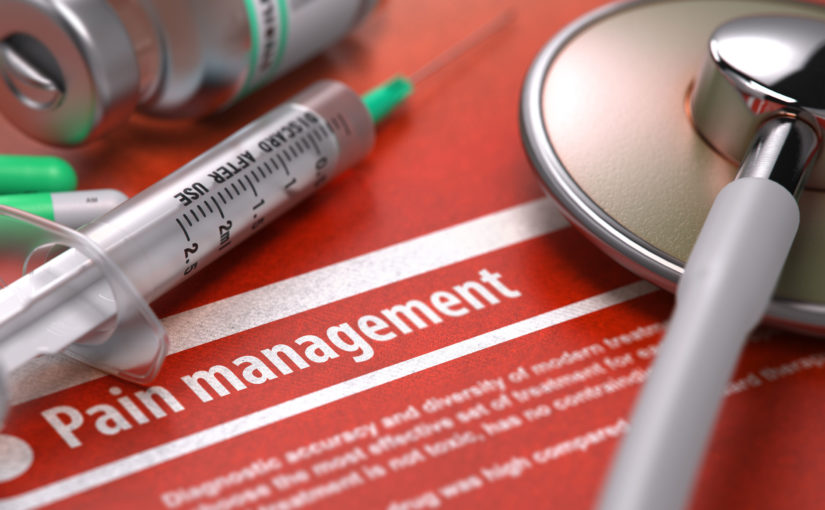
Chronic pain is something many people have been forced to reckon with during their everyday activities. Pain, especially in the joints, back, or neck, can be debilitating and affect a patient’s ability to run, walk, climb stairs, and a number of other physical activities.
Pain management is any method of alleviating pain and restoring the patient’s ability to perform routine tasks. These techniques are broadly categorized into invasive and noninvasive varieties.
Invasive procedures, like surgery–often requiring anesthesia, used to be the only option, but research has shown that noninvasive pain management techniques can be just as effective without many of the risks and complications that come with invasive procedures.
What are noninvasive non-drug pain management techniques?
A noninvasive non-drug pain management technique is one that is not invasive and also does not rely on medication as a necessary part of the treatment. There are a plethora of different varieties of these techniques, each with its own set of benefits.
- Exercise: A program of exercise is a prescription for a fundamental change in lifestyle. Building strength, flexibility, and cardiovascular health invigorates the body. A stronger, more healthy body means that normal motion can be more easily restored. Certain exercises specifically target muscles and joints for recovery, like water therapy or the McKenzie method.
- Chiropractic treatment: The use of manual techniques to manipulate the body allows for a chiropractor to use force to restore a normal range of motion to affected parts of the body. Muscles and ligaments can be made more flexible and strengthened. Coupled with nutritional and lifestyle changes, chiropractic treatment has been found to be an effective way to manage pain.
- Cognitive therapy: Employing psychological techniques, patients can be “taught” to respond differently to pain. Relaxation techniques and meditation can change the way a patient’s body physically responds to pain. A patient’s psychic response to pain can be controlled so that he or she can begin to cope with the physical aspects of the pain itself. Muscle tension can also be controlled, reducing pain from musculoskeletal sources.
- Cold or hot packs: The temperature of the skin can be controlled using cold or hot packs and ultrasound techniques. Used as a complement to exercise and other lifestyle changes, cooling or heating the skin can alleviate pain, reduce swelling, and control the speed of blood flow in the area. Ice and heat techniques are especially used in acute injuries.
- Electrotherapy: Electrotherapy reduces back pain by using a small, battery-powered device that connects to the skin through electrodes. This creates a circuit of electrical impulses along nerve fibers in the affected area and can reduce pain significantly for some patients. Randomized trials and a number of peer-reviewed studies have recognized the efficacy of electrotherapy in pain management.
What are noninvasive pharmacological pain management techniques?
Drugs are chemical agents that can be used to control pain during medical care. It is important to recognize that while they can be extremely effective, many come with a host of side effects. There are a variety of drugs, each coming with its own set of benefits and risks.
Analgesics are drugs that act on the peripheral and central nervous system to achieve analgesia, or pain relief. There are a variety of analgesics that range in strength, efficacy, and side effects. They can include acetaminophen, paracetamol, and various opioids and can be used in combination with other pain management techniques. Overuse or long-term use can cause damage to the kidneys and liver. Nonsteroidal anti-inflammatory agents (NSAIDs) are considered analgesics as well, but refer to the non-steroidal, non-addictive portion of the drugs. They are generally available over the counter without a prescription.
Morphine is a narcotic medication that acts on the central nervous system. Because of its addictive, habit-forming nature, it is generally only prescribed immediately after surgery and is strictly monitored and dosed. Morphine is an opiate and cannot be relied upon for long-term pain management, but can serve as an immediate relief from acute pain.
Muscle relaxants affect skeletal muscle and reduces muscle tone, alleviating muscle spasms and pain. Muscle relaxants treat specific types of pain and are only appropriate for those stemming from the skeletal muscle system.
- What Causes Pain? New Research Weighs In
- The Benefits of Cosmetic Acupuncture
- Noninvasive Pain Management Techniques
- Acupuncture: 5 Reasons Why It's Right for You
- Why Medical Acupuncture Is So Beneficial
- The Top 10 Things You Did Not Know About Physical Therapy
- FIVE WAYS A PHYSIOTHERAPIST CAN HELP PREVENT FALLS
- 7 Surprising Myths About Physical Therapy
- The Evolution of Physical Therapy
- 9 Health Secrets from Physical Therapists
- How can acupuncture help with my specific health ailment?